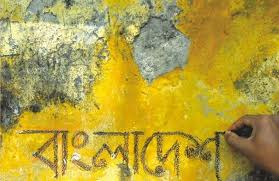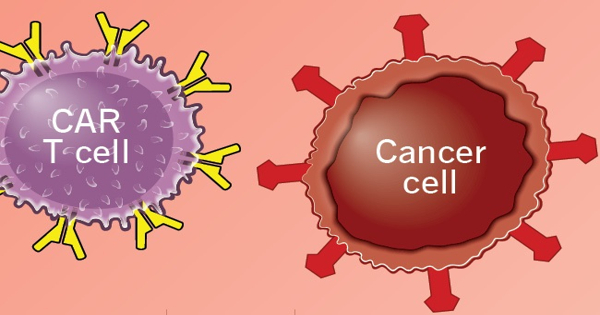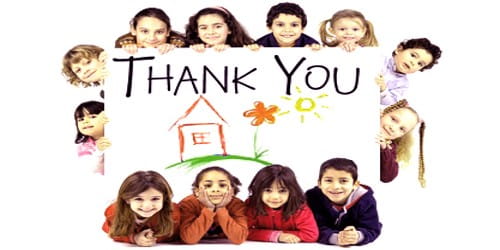Vision of Bangladesh 2050
We envision a democratic system where people choose their government freely and get services from it without hassle, enjoy freedom from fear and intolerance, live with dignity; where every citizen is assured of social justice, environmental protection, human rights and equal opportunities; and where the rule of law and good governance flourish. We envision a liberal, progressive and democratic welfare State. Simultaneously we envision a Bangladesh which by 2, will be a middle income country where poverty will be drastically reduced where, our citizens will be able to meet every basic need and where development will be on fast track, with ever-increasing rates of inclusive growth.
Goal 1
To become a participatory democracy
- Strengthened intra-party democracy and financial transparency
- A credible election process
- A transparent campaign financing system
- A civil and enlightened dialogue and debate oriented political culture
- An Effective Parliament and Accountable Members of Parliament
- Mandatory nominations for directly elected female Members of Parliament
- 1Widely implemented Right to Information Act
- An independent, efficient, decentralized and corruption-free judiciary
- Guaranteed protection of human rights and the rule of law
- A non-partisan and professional public administration system
- An elected President with meaningful discretionary power
- A vigilant and active civil society.
Goal 2
To have an efficient, accountable, transparent and decentralized system of governance
- A transparent and accountable policy-making process
- A transparent procurement system
- Wide use of e-governance in all government agencies
- An effective Anti-corruption Commission
- Planning, implementation and monitoring of the budget from a
- poverty alleviation perspective
- An independent Bangladesh Bank
- An efficient, transparent and people-friendly land administration
- A decentralized and devolved local government system
- A trusted, decentralized, and impartial police force
- A permanent Pay and Services Commission
Goal 3
To become a poverty-free middle-income country
- Greater productivity, diversification and commercialization of agriculture
- Accelerated growth in the industry and services sectors
- A competitive investment climate
- Increased global market access by Bangladeshi firms
- A diversified export base and markets
- A sizeable domestic consumer market
- Development of small town growth hubs via rural non-farm industries and services
- Sound financial institutions and greater financial depth
- A skilled workforce
- Higher foreign exchange earnings from the export of semi-skilled and skilled labor.
- Coordinated and complementary roles of the public and private sectors in all areas of the economy
- Poverty, income and employment
Agriculture
- Land management,
- Diversification of agriculture, agricultural research, extension and communication
- Agricultural input supply, including irrigation
- Issue of subsidy
- Trade liberalisation and agriculture
- Food security and social safety nets
- Rural infrastructure and rural non-farm sector
- Industry
- Domestic industry
- Export oriented production
- Physical infrastructure
- Financial sector, financial infrastructure and capital markets
- Role of multinational corporations, foreign private investment and level playing field
- Revival of the jute industry
- Privatization of state-owned industries
Goal 4
To have a nation of healthy citizens
- A replacement level of fertility rate
- Survival and healthy development of all children
- Improved health and well-being of women
- Universal access to basic healthcare and quality services
- Better nutritional status of mothers and children
- Adoption and maintenance of healthy lifestyles
- Universal access to safe drinking water and sanitation towards improved public health
- Decentralization and community involvement to improve overall health services
- A rigorous medical education system
Goal 5
To develop a skilled and creative human resource
- Universal access to education up to the secondary level
- An integrated/unified education system
- Necessary infrastructure to ensure quality of education at all levels
- Analytical and creative thinking by our youth, supported by a core set of values
- Vocational training for secondary school graduates
- Need-based free tertiary education for the best students
- Increased opportunities for research
- A decentralized education system and effective education governance
- Computer literacy for all
- Gender balance at all levels of education
- A culture of Corporate Social Responsibility for increased investment in education
- Financing public education
Goal 6
To become a globally integrated regional economic and commercial hub
- Develop a clear marketing strategy to attract foreign investment
- Build a mega port along Chittagong coastline
- Build a super highway connecting the mega port with neighboring countries
- Establish an international airport in close proximity to the mega port
- Develop and expand port facilities at Mongla
- Develop cyber parks to boost an ICT driven service sector
- Ensure uninterrupted power supply all over the country
- Integrate into a regional energy market
- Promote the deepening and broadening of capital markets
- Train a suitable workforce
- More effective regional integration of Bangladesh economy
Goal 7
To be environmentally sustainable
- Effective urban planning
- Reduced air pollution
- Reduced water pollution
- Conservation of designated wetlands to maintain ecosystem balance
- Strengthened regional water management
- Retention and improvement of soil fertility
- Environmentally safe waste management and disposal by households, hospitals and industries
- Cost-effective alternate sources of energy
- Protection of designated forest areas
- Effective natural disaster management
- Institutionalization and effective implementation of EIA
Goal 8
To be a more inclusive and equitable society
- Access to productive asset opportunities for the property-less and marginalised groups
- Corporate ownership rights for workers and the deprived
- Safety nets for vulnerable groups
- Ensuring gender equality
- Provide minimum guaranteed employment opportunities for the resourceless
- Targeted programmes for the physically challenged
- Economic and social inclusion of minorities
- Guaranteed access to educational and healthcare opportunities for the resource-poor and minorities
- Promotion of cultural, religious and ethnic diversity as a national heritage
- Reduced regional inequality.
Goal 9:
Sustainable power and energy
Bangladesh will generate around 30,000 MW electricity per year, and explore new possible & probable COAL & Gas reserve to substrate Bangladesh’s energy demand for at least 100years
- Generating electricity
- Generation of electricity from proven gas reserve
- Proven coal reserve 7 nuclear power plant
- The government should encourage the entrepreneurs to invest in the captive power generation by waiving the renewal fee
- Concentrated & coordinated efforts by Govt.
Goal 10
Technology based agriculture
Bangladesh will have enhanced productivity based on modern technology, diversified types of agricultural outputs, & commercialized agricultural produce. The economy of Bangladesh is primarily dependent on agriculture about 84 percent of the total population live in rural areas and is directly or indirectly engaged in a wide range of agricultural activities.
Opportunities:
- Agriculture sector is the single largest contributor to GDP.
- Crop production system is highly labour intensive and there is an abundance of labour supply in the country.
- Agriculture is the largest source of employment for skilled and unskilled labour.
- Favorable natural environment generally exists throughout the year for crop production.
- Wide range of bio-diversity exists for different crops.
Constraints:
- Agriculture is dependent on the vagaries of nature and is risky.
- Availability of cultivable land is decreasing.
- Lack of proper land use planning.
- Widespread poverty among the population engaged in agriculture.
- Lack of required capital for agricultural activities.
- Agricultural commodities are rapidly perishable and post harvest losses are too high.
- Inadequacy of appropriate technology considering farmers’ socio-economic conditions.
- Decreasing yields of different crops due to slow expansion of modern technology as well as unplanned use of soil and water.
- Uncertainty of fair price of agricultural due to underdeveloped marketing system.
- Very weak backward-forward linkage in agriculture.
Why need?
- Supply seeds & fertilizers
- Innovative technology based productions
- Better land usage
- Increasing domestic milk production
- Increasing the cold storage facility
- Poultry & dairy medical services
- Removing the role of intermediate agent
- Overcoming the shortage of working.
Bangladesh prospect of 2050
1. Democracy and effective parliament
Democracy and strong democratic institutions will be established for holding reliable election at regular intervals, accountability of government and effective Parliament. All necessary steps will be taken for making Parliament effective.
2. Political framework, decentralization of power & people’s participation
Local government will be given due importance with a view to effecting radical change of the political system. The local government institutions will play a critical role in development programmes. Self-reliant local self-government institutions will be established at upazila and zila levels to ensure representative, responsive and functional governance at the grassroots levels.
3. Good governance through establishing rule of law and avoiding political partisanship
Human rights will be established on a strong footing with a view to ensuring the rule of law. Independence of the judiciary will be ensured and the institutions of the state and administration will be freed from partisan influence. The basis of appointments and promotions will be merit, efficiency, seniority, honesty and loyalty to the Republic; political connections will have no relevance.
4. Transformation of political culture
Terrorism, corruption and use of religion for politics will be eliminated. Steps appropriate to the time will be taken to establish democratic principles in the political parties, transparency of political funding, civility and tolerance.
5. A society free from corruption
The institutions of the State will be made more effective along with an independent and strong Anti-corruption Commission for curbing corruption. Social resistance to corruption will be promoted along side legal steps. All possible steps will be taken to stop corruption, such as charter of citizens’ rights, right to information, computerization of official documents, and decentralization of power. Adequate checks at every level of public spending would be built into the financial management system of the government.
6. Empowerment and equal rights for women
The Women’s Policy of 1997 will be revived for ensuring equal right and access for women to the state and social space; laws which discriminate against women will be amended and 100 seats will be reserved for women for direct election.
7. Economic development & initiative
a. Meeting basic needs: With a view to providing food, clothing, shelter, education and health care to the citizens in accordance with Article 15 of the Constitution, gross domestic product will be raised to 8% by 2013 and 18-20% by 2050 which will be sustained thereafter.
b. Population and labour force: Population in 2050 is estimated at 195m, and labour force at 135m. Programmes will be taken up for employment of at least 90% of the work force.
c. Alleviation of poverty: We aim not at reduction of poverty, but removal of poverty, through which we shall try to achieve the Millennium Goals declared by UN by 2015, and by 2017 latest. Beginning in 2050, poverty will be reduced to 5% from 45% now, progressively. Number of poor people will rise from 45 million now to 65m in 2021, and then fall to 25m in 2021. Sustainable safety nets will be established for the extreme poor until poverty is removed.
d. Food & nutrition: Food deficiency will be removed and self-reliance in food production achieved by 2012, which will enable us to meet the nutrition needs of 85% of the population.
e. Health care: By 2050, a minimum daily intake of 2,122 kilo calories of food, elimination of contagious disease, primary health care and sanitation for all will be ensured. Average longevity will be increased to seventy years, and efforts will be made for the reduction of child and maternal mortality.
f. Education: Enrolment at the primary level will be increased to 100% net by 2010. Elimination of illiteracy by 2014, improvement in the quality of education, creation of a generation educated in science and technology, graduation degree level education made free by 2013 and ensuring higher salary for teachers are the other educational goals.
g. Industry: A strong foundation for industrialization will be established by 2050. Contribution of the industrial sector to national GDP will be doubled. Primacy will be given to agro and labour intensive industries and the highest emphasis will be given to the information technology sector. The investment policy will be geared to implementing a strategy for attracting both domestic and foreign investment.
h. Energy security: An energy policy will be adopted tapping all sources of traditional and non-traditional energy to ensure an accelerated rate of economic development and industrialization. A three year crash programme will be taken up to meet the existing crisis. By 2015, electricity production will be increased to 8,000 megawatt. By 2050, demand for electricity is projected to increase to 35,000 megawatt. We will take all possible actions aiming at enhancing our generation capacity. To increase gas production, regular survey of gas resources and work on well development will be undertaken. To meet energy demand, efforts will be undertaken for regional energy security through mutual cooperation in addition to exploring internal sources.
i. Infrastructural development: Road, rail, river and air transport and telecommunication systems will be expanded. Construction of bridges and tunnels for Padma and Karnaphuli rivers, connecting Bangladesh with the Asian highway and Asian railway, improvement of port facilities, building of a deep sea port to open up Bangladesh’s ports to countries of Asia will be implemented. In Dhaka, construction of a metro tunnel, elevated rail and circular rail to remove traffic jams and to solve public transport problems will be studied forthwith in order to undertake a feasible project. The project will then be implemented on a priority basis.
j. Housing: By 2015, housing for all will be ensured. In every union and upazila, ‘growth center’ centric village housing and in towns housing with modern amenities will be implemented.
k. Environment: All measures will be taken to protect Bangladesh, including planned migration abroad, from the adverse effects of climate change and global warming. Facing natural calamities, planned reduction of air pollution, prevention of industry and transport related air pollution and disposal of waste in scientific manner will be ensured. Steps will be taken to make Bangladesh an ecologically attractive place through retention of forests and water bodies and prevention of river erosion.
l. Water resources:Bangladesh Awami League will take the initiative to formulate a comprehensive regional water policy along with India, Nepal and Bhutan for regional water security. In addition, in keeping with a comprehensive water policy, articulated earlier by Bangladesh Awami League, measures will be taken for development of our water resources and their rational use.
8. Bangladesh in the global arena
a. Achievements of liberation: Multi-pronged measures will be taken to uphold the glorious history and the fruits of our national independence and liberation, to energize the new generation with the spirit of liberation, struggle, patriotism and love for humanity. Highest priority will be given to the development of an innovative spirit in the younger generations and opportunity will be provided for them to participate in nation building activities.
b. Culture: Measures will be taken to remove obstacles in the development of Bengali culture, literature, art, music and sport and to provide all opportunities by the state to enable the younger generations to attain international standards and to contribute to the nation.
c. Foreign policy: In international affairs Bangladesh will follow the policy of ‘friendship towards all and malice towards none’.
Key Targets based on Vision 2021
- Secure and sustain an annual rate of GDP growth of 8 per cent by 2013, which will increase to 10 per cent from 2017.
- Bring down the proportion of disadvantaged people living below the poverty line to 25 million, i.e. 15 per cent by 2021.
- Ensure a minimum of 2,122 k.cal/person/day of food for all poor people and standard
nutritional food to at least 85 per cent of the population by 2021.
- Ensure 100 per cent net enrolment at primary level as soon as possible after 2010, provide free tuition to degree level as soon as possible after 2013, attain full literacy as soon as possible after 2014, and ensure that Bangladesh is known as a country of educated people with skills in information technology.
- Achieve self sufficiency in food by 2012.
- Ensure living accommodation for the entire population as soon as possible after 2015,
- supply of pure drinking water for the entire population as soon as possible after 2011
and bring each house under hygienic sanitation by 2013.
- Eliminate all contagious diseases and increase life expectancy to 70 years by 2021.
- Reduce maternal mortality to 1.5 per cent, raise the use of birth control methods to 80 per cent, and bring down infant mortality to 15 per thousand live births by 2021.
- Change the sectoral composition of output with the shares of agriculture (primary), industry (secondary), and services (tertiary) standing at 15 per cent, 40 per cent, and 45 per cent respectively in 2021.
- Reduce the unemployment rate to 15 per cent; change the shares of agriculture industry, and services in employment to 30 per cent, 25 per cent, and 45 percent respectively in 2021.
- Generate 8,500 megawatts of electricity by 2013, which will increase to 11,500 megawatts in 2015, and make provisions to meet the expected demand for power of 20,000 megawatts in 2021.
















